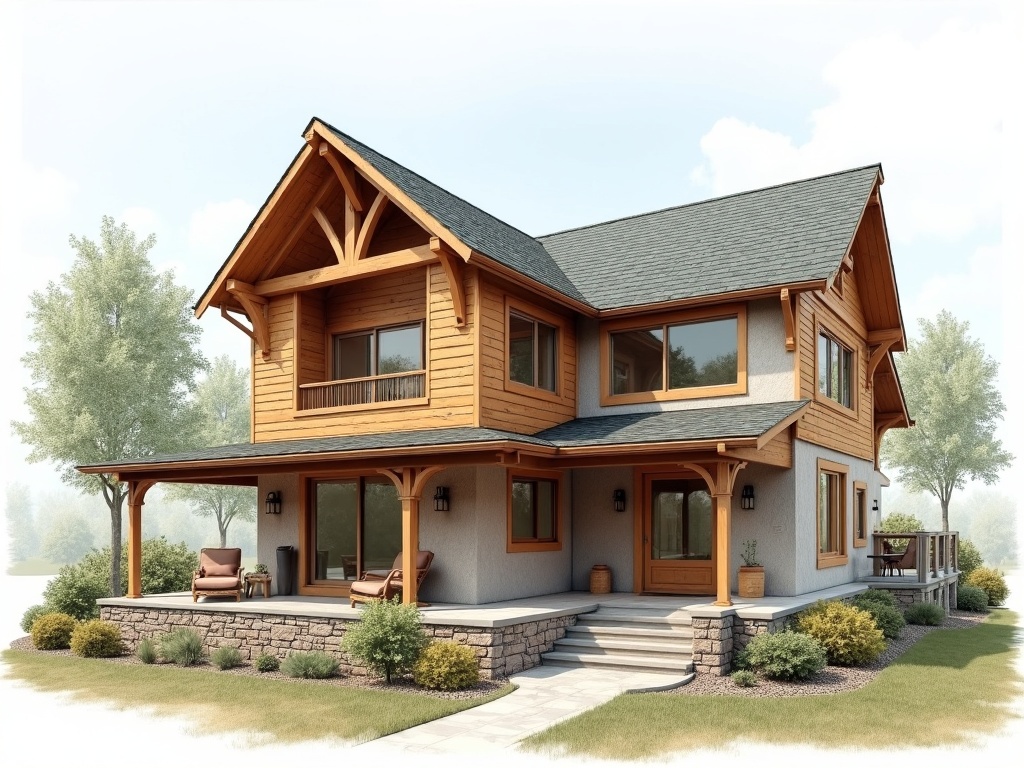How Builders Make Sure Homes Last for Generations

When most people picture a new house, they think about the outside—the colour of the walls, the roof style, or the shape of the windows. But the real test of a strong home isn’t what you see on the surface. It’s what goes into the build from the very beginning. A house that lasts for decades is one that’s designed and built with the right choices in materials and structure.
Builders know this. That’s why every detail matters, from the foundation beneath the soil to the frame that gives the house its shape.
Why Frames Matter So Much
The frame of a house is basically its skeleton. If the frame is weak, the whole home suffers. This is why many builders stick with timber wall frames—they’re reliable, flexible, and easier to work with compared to some other options.
Strong choices such as Timber Wall Frames WA are trusted because they balance durability with practicality. They can take the stress of everyday use, handle small shifts in the ground, and still provide a solid structure. On top of that, they make it easier to add insulation and other features that keep the house comfortable year-round.
Laying a Solid Foundation
Before walls or frames go up, everything starts with the foundation. A good foundation spreads the weight of the house evenly, stopping it from sinking or shifting over time. Most foundations are made from reinforced concrete because it’s strong and dependable.
But it’s not just about the concrete. Builders also check the soil underneath. If the ground isn’t prepared properly, even the best concrete foundation won’t last. A strong base is one of the most important steps to building a home that stands the test of time.
Walls That Do More Than Divide Rooms
Walls aren’t just barriers. They’re part of the structure that keeps the house solid, while also protecting against weather and holding insulation in place. Timber frames make this job easier because they leave space for insulation materials to fit snugly. That means better temperature control and lower energy bills for the people living inside.
The outside materials matter too. Using the right cladding or coverings helps stop water damage and mould, both of which can weaken a house over the years. With a well-built frame and strong walls, a home is protected inside and out.
Roofs Built to Protect
The roof is one of the hardest-working parts of a house. It takes on rain, wind, sun, and in some areas, even snow. If the roof isn’t strong, leaks and damage can affect the entire structure.
That’s why builders use roof trusses—triangular timber supports that spread the weight evenly. Once the trusses are in place, materials like tiles, metal sheets, or shingles are added on top. When done right, the roof shields the home for decades without trouble.
Floors That Hold Up Over Time
Floors are more than just a surface to walk on. They carry heavy furniture, appliances, and daily traffic. To stay strong, they’re supported by timber beams and joists. If these are built properly, floors won’t sag or creak, even after years of use.
In multi-storey homes, the floor also doubles as the ceiling for the level below, so getting it right is even more important. Well-designed floors keep everything stable from top to bottom.
Why Quality Matters More Than Shortcuts
A home is only as good as the materials that go into it. Cheap timber can split, weak fasteners can loosen, and low-grade concrete can crack. Builders who care about long-lasting results choose materials they can trust.
Timber, steel, and concrete all come in different grades, and knowing which one to use for each part of the house is key. Cutting corners might save money up front, but it usually means expensive repairs later.
Building With the Environment in Mind
It’s not just the materials—it’s also how the home is designed for its surroundings. A house in a hot climate needs good insulation and ventilation. In wet areas, strong roofing and proper drainage are essential. Builders plan for these conditions so the home can handle whatever the environment throws at it.
Timber frames help here too. They allow for flexible designs, whether it’s adding bigger windows, thicker insulation, or a unique layout. That adaptability makes timber a smart choice for many modern homes.
The Role of Maintenance
Even the strongest homes need care. Builders set them up to last, but regular maintenance from the people living there is part of the deal. Cleaning gutters, fixing small leaks, and repainting surfaces all help protect the materials.
When the foundation, frame, roof, and walls are solid, maintenance is all that’s needed to keep the home in great condition for generations.
What Really Makes Homes Last
Homes that last for decades aren’t built by accident. They’re the result of careful planning, smart material choices, and solid design. Timber wall frames, strong foundations, durable walls, and reliable roofs all work together to create a safe and stable structure.
When everything is done right, the result isn’t just a house—it’s a home built to protect and support families for generations.


